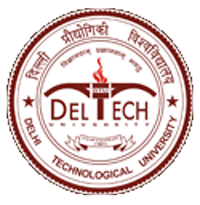Please use this identifier to cite or link to this item:
http://dspace.dtu.ac.in:8080/jspui/handle/repository/21491| Title: | A STUDY ON MICROSTRUCTURAL AND MECHANICAL PROPERTIES OF ALUMINIUM ALLOYS JOINT FABRICATED BY CMT WELDING PROCESS |
| Authors: | SINGH, SATYAVEER |
| Keywords: | ALUMINIUM ALLOYS JOINT CMT WELDING PROCESS MECHANICAL PROPERTIES COLD METAL TRANSFER (CMT) U-CMT C-CMT |
| Issue Date: | Feb-2025 |
| Series/Report no.: | TD-7829; |
| Abstract: | The 2xxx series alloys are regarded as difficult to join because of softening due to precipitate dissolution, and their welding is challenging. Third-generation Al-Li-based alloys are preferred over traditional Al alloys due to their superior mechanical properties, including high toughness, stiffness, and specific strength, making them ideal for aircraft, automotive, and construction applications. This study explores optimizing welding parameters for AA2099-T86 alloy using Cold Metal Transfer (CMT) and Pulsed Metal Inert Gas (Pulse MIG) welding through CRITIC and ROV methods. Experiments with varying welding currents, speeds, and contact tip-to workpiece distances focused on bead geometry, including weld penetration, dilution, and heat input. The L9 Taguchi orthogonal array identified optimal parameters, with CRITIC and ROV methods used to consolidate multiple responses. Optimal settings were I3S3D2 for CMT and I1S3D2 for pulse MIG. ANOVA assessed parameter impact on weld bead geometry, and confirmation tests validated the optimal settings. The study found welding current to be the most influential parameter, followed by welding speed and CTWD, for defect-free CMT welds. Weld bead characteristics such as penetration (P), reinforcement (R), and width (W) were analyzed across various process parameters. Mechanical properties, including tensile strength and microhardness, were evaluated for different heat inputs. Microstructural analysis of the parent metal (PM), fusion line (FL), and weld metal (WM) was performed; with tensile fracture surfaces examined using FESEM and EDX. Using Taguchi L9 design, butt joints were created to optimize tensile strength and microhardness. ANOVA assessed the effects of process parameters, revealing that welding current was the most significant factor. The optimal parameters identified were a welding current of 180 A, a speed of 8 mm/sec, and a contact tip-to-workpiece distance of 4 mm, yielding a tensile strength of 302 MPa and microhardness of 118 HV. Modern industries v ` use ultrasonic vibration to enhance material flow and grain growth during welding processes. This study investigates the fabrication of CMT-welded joints from AA2099-T86 under various conditions, with current, travel speed, and contact tip-to-workpiece distance as variable parameters. Gas flow rate, ultrasonic frequency, and vibration amplitude were kept constant at 16 liters/min, 20 kHz, and 60 µm, respectively. Microstructural analysis of the welds was conducted using a field emission scanning electron microscope (FESEM). Butt joints were fabricated under three different environments, i.e., conventional (C-CMT), liquid nitrogen (LN-CMT), and ultrasonic vibration welding (U-CMT). Results revealed that ultrasonic vibration during CMT welding significantly improved ultimate tensile strength (UTS), reaching 252 MPa—a 10.52% increase over C-CMT and a 2.02% increase over LN-CMT. This improvement is attributed to the smaller grain size in the U-CMT sample (42.88 μm), compared to 53.48 μm for C-CMT and 47.71 μm for LN-CMT. Microhardness values were higher for U-CMT (115.96 HV) compared to C-CMT (106.14 HV) and LN-CMT (110.91 HV), with the base metal having a hardness of 106 HV. The increased microhardness in U-CMT is linked to finer precipitates and reduced grain size. U-CMT samples showed a 9.25% and 4.55% increase in microhardness over C-CMT and LN-CMT samples, respectively. The U-CMT joint displayed a columnar grain structure, while C-CMT joints had elongated grains. The use of liquid nitrogen cooling decreased the grain size to 47.71 µm, demonstrating its effectiveness in managing grain structure. |
| URI: | http://dspace.dtu.ac.in:8080/jspui/handle/repository/21491 |
| Appears in Collections: | Ph.D. Mechanical Engineering |
Files in This Item:
| File | Description | Size | Format | |
|---|---|---|---|---|
| SATYAVEER SINGH Ph.D..pdf | 4.52 MB | Adobe PDF | View/Open |
Items in DSpace are protected by copyright, with all rights reserved, unless otherwise indicated.



